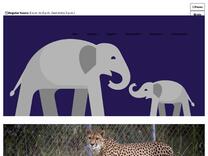Japanese koi | Smithsonian’s National Zoo and Conservation Biology Institute https://nationalzoo.si.edu/animals/japanese-koi
Koi fish are colorful, ornamental versions of the common carp. Modern Japanese koi are believed to date back to early 19th-century Japan where wild, colorful carp were caught, kept and bred by rice farmers. The word “koi” comes from the Japanese word for “carp.”
Though carp domestication is believed to have begun in China as far back as the 4th

